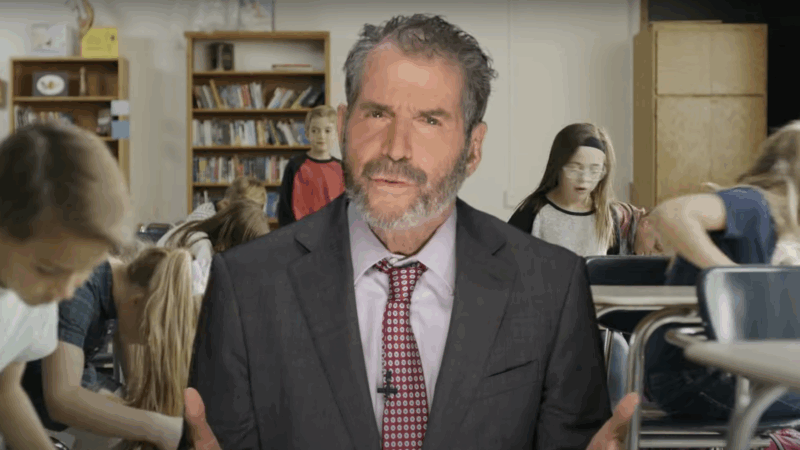Competition Improves Services. So Why Not Apply That to Schools?
Government schools now spend about $20,000 per student.

Now that Texas and South Carolina have passed school choice bills, parents will be able to choose the best school for their kids in 17 states.
Why not all states?
After all, competition improves services.
The Post Office couldn't get it there overnight. Then FedEx showed it can be done. Quickly, UPS and DHL did it, too, and now even the Post Office does—sometimes.
Consumer choice is a big reason capitalist countries outperform socialist ones.
But in most of America, parents have little or no choice when it comes to which school their kids attend. Bureaucrats decide, based on where you live.
Live in a neighborhood with lousy schools? Too bad for your kids.
Some parents, desperate to get their kids out of a bad school, are jailed for lying about where they live.
All parents should get to choose which school their kids attend.
But in most states, government school bureaucrats won't let them.
Sometimes, it's because they get big political donations from teachers unions. Unions don't want competition.
Years ago, New York City's teachers union staged a protest outside my office because I did a TV special about school choice. I'd confronted union boss Randi Weingarten about how hard it was to fire even a terrible teacher. Instead, principals sneakily transfer them to another school. "Dance of the lemons," they call it.
Weingarten just replied, smugly, "We'll police our own profession."
Her protesters then picketed ABC News headquarters, shouting, "Shame on you, John Stossel!"
"They don't want people to be able to take their kids somewhere else because they know that they're failing your children," says education researcher Corey DeAngelis in my new video. "Money doesn't belong to the government schools. Education funding is supposed to be meant for educating children, not for propping up and protecting a particular institution. We should fund the student, not the system."
Then parents can take education funding to a charter or a private school. Schools get better when they have to compete for your kids.
A recent study found that "more education freedom is significantly associated with increased [National Assessment of Educational Progress] scores."
Florida's math and reading scores were once among the worst in the nation. After they expanded school choice, says DeAngelis, "They ranked No. 1…and it's not a money issue. They spend about 27 percent less than the national average, and they're knocking it out of the park."
A study on Florida's expansion of school choice found "benefits include higher standardized test scores and lower absenteeism and suspension rates. Effects are particularly pronounced for lower-income students."
When there's choice, public schools get better, too. Twenty-nine studies looked into the impact of school choice on test scores; 26 found a positive effect.
Wait. I shouldn't call them public schools. They're government schools. They're less "public" than a "private" supermarket. Markets are often open 24/7. Anyone can enter. Try that with a government-run "public" school.
School bureaucrats and teachers unions say that "choice takes money away from public schools!"
But that's not true. Government schools now spend about $20,000 per student. School choice vouchers average just $8,200.
So, when a student leaves and takes voucher money with them, government schools are left with more money per student!
As DeAngelis puts it, "They get to keep thousands of dollars for students they're no longer educating."
Ignorant media leftists insist that schools are underfunded. "If we want our public schools to get better, we can't take money out of the system," says an anchor on The View.
But no one is taking money out of the system! Inflation-adjusted funding per student doubled over the past 40 years.
"Government schools in the United States now spend around $20,000 per student per year," says DeAngelis. "That's about 60 percent higher than average private school tuition!"
$20,000 per child. Where does that money go?
"To administrative bloat," says DeAngelis.
Since 2000, student enrollment rose by 5 percent, but the number of administrators increased by 95 percent.
"The best solution to this problem is to make the funding portable," says DeAngelis. "Let funding follow the child. Then maybe administrators will have an incentive to up their game.…Competition is a rising tide that lifts all boats."
COPYRIGHT 2025 BY JFS PRODUCTIONS INC.




Show Comments (20)